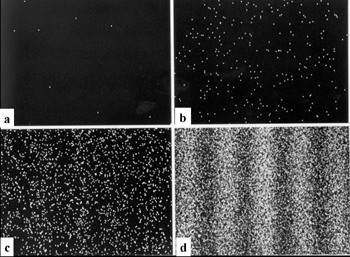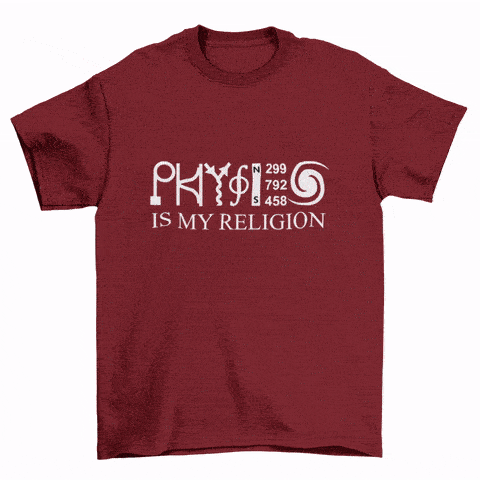| large hadron collider |
Physics is an exploratory science. New experiments in physics change or expand our existing knowledge in one way or another. Let us find out how this has happened in history.
10. Galileo's Tower of Pisa experiment



Before Galileo, a majority of people used to follow the teachings of ancient Greek philosopher, Aristotle, who had proclaimed that different weights when dropped from same height experienced different amounts of attraction from the Earth thus falling at different speeds.
It is said that in 1589 Galileo climbed atop Tower of Pisa and dropped two objects of different masses in order to debunk Aristotelian belief.

In 1971, astronaut David Scott re-created Galileo's famous experiment on the moon by dropping a hammer and a feather simultaneously. You can watch it happen in this clip.
9. Faraday's law of induction
A sudden movement of a magnet through a coil produces a reading on the galvanometer meaning that a changing magnetic field can induce an electric current in the coil.

This observation was first made by Michael Faraday in the year 1831. Today, electric generators use the same principle to convert mechanical energy into electrical energy that powers our household electric appliances.
8. Michelson Morley experiment
Does light, like other waves, require a medium to travel? Scientists of the 19th century thought so. They proposed the existence of an invisible stationary substance permeating through all of space that they named aether.

In the 1880s, American physicist Albert Michelson thought of discovering the aether.
If aether really exists, Earth moving through it would cause a wind in the same way that there seems to be a wind outside a moving car.
To a person in the car, the air outside the car would seem like a moving substance. In the same way, aether should seem like a moving substance to things on Earth.
Michelson designed an interferometer to measure the speed of the "aether wind" in 1887 along with one of his colleagues, Edward Morley.

However, no aether wind was detected by the experimental setup making it the most famous failed experiment in history. But, it had been shown that light required no substance medium whatsoever to travel in space.
7. Double slit experiment
Newton believed that light was a stream of energy-carrying particles. But he was proven wrong by Thomas Young, in 1801, who demonstrated with experiment that light was a wave.

In this experiment, when light emitted from two sources is forced to interfere, an unexpected pattern is formed on a distant screen. This interference pattern can be explained by wave theory of light only.
6. Discovery of electron
The atom was greatly regarded as the smallest possible structure in the universe. In 1897, however, Joseph Thomson performed a groundbreaking experiment suggesting that atom was divisible.

Thomson used a cathode ray tube, which is a vacuum-sealed glass tube with a cathode and anode fixed inside it. A beam of electrons was observed to move from one end to another upon the application of high voltage.
Thomson also identified that electron was not electrically neutral because he observed a deflection in the beam when an external electric field was applied.
5. Photoelectric effect

In 1887, German experimental physicist Heinrich Hertz stumbled upon an amazing phenomenon, the photoelectric effect. He discovered that certain metal electrodes when illuminated by the UV light produced electric sparks.
Two decades later, Einstein proposed an explanation of the photoelectric effect using a concept first put forward by Max Planck that light waves consist of tiny bundles or packets of energy known as photons or quanta.
If aether really exists, Earth moving through it would cause a wind in the same way that there seems to be a wind outside a moving car.
To a person in the car, the air outside the car would seem like a moving substance. In the same way, aether should seem like a moving substance to things on Earth.
Michelson designed an interferometer to measure the speed of the "aether wind" in 1887 along with one of his colleagues, Edward Morley.

However, no aether wind was detected by the experimental setup making it the most famous failed experiment in history. But, it had been shown that light required no substance medium whatsoever to travel in space.
7. Double slit experiment
Newton believed that light was a stream of energy-carrying particles. But he was proven wrong by Thomas Young, in 1801, who demonstrated with experiment that light was a wave.

In this experiment, when light emitted from two sources is forced to interfere, an unexpected pattern is formed on a distant screen. This interference pattern can be explained by wave theory of light only.
6. Discovery of electron
The atom was greatly regarded as the smallest possible structure in the universe. In 1897, however, Joseph Thomson performed a groundbreaking experiment suggesting that atom was divisible.

Thomson used a cathode ray tube, which is a vacuum-sealed glass tube with a cathode and anode fixed inside it. A beam of electrons was observed to move from one end to another upon the application of high voltage.
Thomson also identified that electron was not electrically neutral because he observed a deflection in the beam when an external electric field was applied.
5. Photoelectric effect

In 1887, German experimental physicist Heinrich Hertz stumbled upon an amazing phenomenon, the photoelectric effect. He discovered that certain metal electrodes when illuminated by the UV light produced electric sparks.
Two decades later, Einstein proposed an explanation of the photoelectric effect using a concept first put forward by Max Planck that light waves consist of tiny bundles or packets of energy known as photons or quanta.
4. Davisson Germer experiment

It was proposed by physicist Louis de Broglie that matter had particle as well as wave nature simultaneously. Davisson and Germer set about to test de Broglie's hypothesis in laboratory.
If electron could behave like a wave, it could interfere with another electron wave much like the light waves do. In 1925, the duo succeeded in obtaining interference pattern.

3. Gravity probe b
This was a satellite-based experiment which was launched on 20 April, 2004 by NASA. Its mission was to measure the space-time curvature around the earth as proposed by Einstein. Total cost of this project was about $750 million.

This was accomplished by measuring the tiny changes in the direction of spin of four gyroscopes contained in the satellite. Initial results confirmed the expected geodetic effect to an accuracy of about 1%.
2. Higgs boson discovery
The Higgs field is a field of energy that is thought to exist in every region of the universe. The field is accompanied by a fundamental particle known as the Higgs boson, which is used by the field to continuously interact with other particles, such as the electron.
In 2012, the particle was finally discovered. Peter Higgs became a worldwide sensation and a Nobel Prize winner.
1. LIGO experiment
The Laser Interferometer Gravitational-Wave Observatory is a large-scale physics observatory which was designed to detect cosmic gravitational waves as predicted by Einstein's general theory of relativity.

By 2017, LIGO had made five detections of gravitational waves, the first four of which were because of colliding black hole pairs. The fifth event, on August 17, 2017, was the first detection of a collision of two neutron stars.

It was proposed by physicist Louis de Broglie that matter had particle as well as wave nature simultaneously. Davisson and Germer set about to test de Broglie's hypothesis in laboratory.
If electron could behave like a wave, it could interfere with another electron wave much like the light waves do. In 1925, the duo succeeded in obtaining interference pattern.

3. Gravity probe b
This was a satellite-based experiment which was launched on 20 April, 2004 by NASA. Its mission was to measure the space-time curvature around the earth as proposed by Einstein. Total cost of this project was about $750 million.

This was accomplished by measuring the tiny changes in the direction of spin of four gyroscopes contained in the satellite. Initial results confirmed the expected geodetic effect to an accuracy of about 1%.
2. Higgs boson discovery
The Higgs field is a field of energy that is thought to exist in every region of the universe. The field is accompanied by a fundamental particle known as the Higgs boson, which is used by the field to continuously interact with other particles, such as the electron.
 |
| Higgs interaction |
In 2012, the particle was finally discovered. Peter Higgs became a worldwide sensation and a Nobel Prize winner.
1. LIGO experiment
The Laser Interferometer Gravitational-Wave Observatory is a large-scale physics observatory which was designed to detect cosmic gravitational waves as predicted by Einstein's general theory of relativity.

By 2017, LIGO had made five detections of gravitational waves, the first four of which were because of colliding black hole pairs. The fifth event, on August 17, 2017, was the first detection of a collision of two neutron stars.








No comments:
Post a Comment